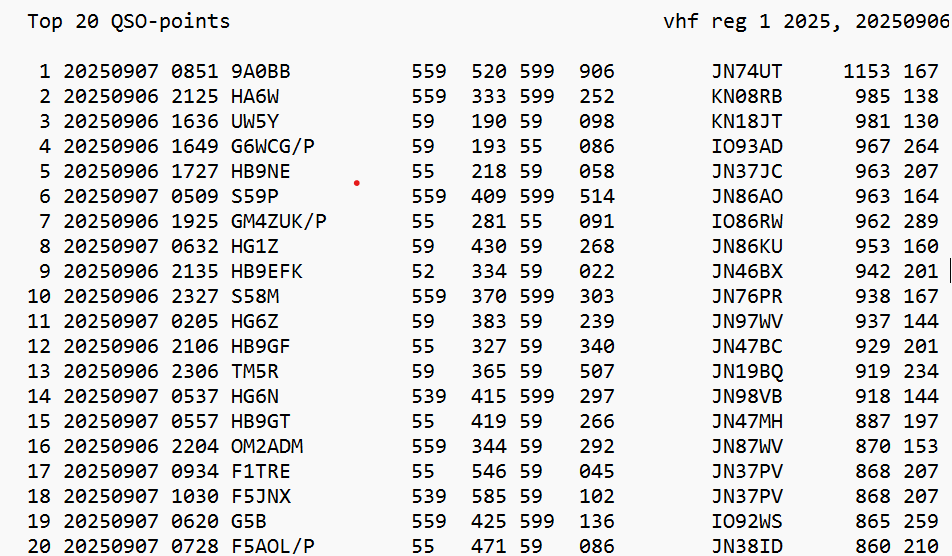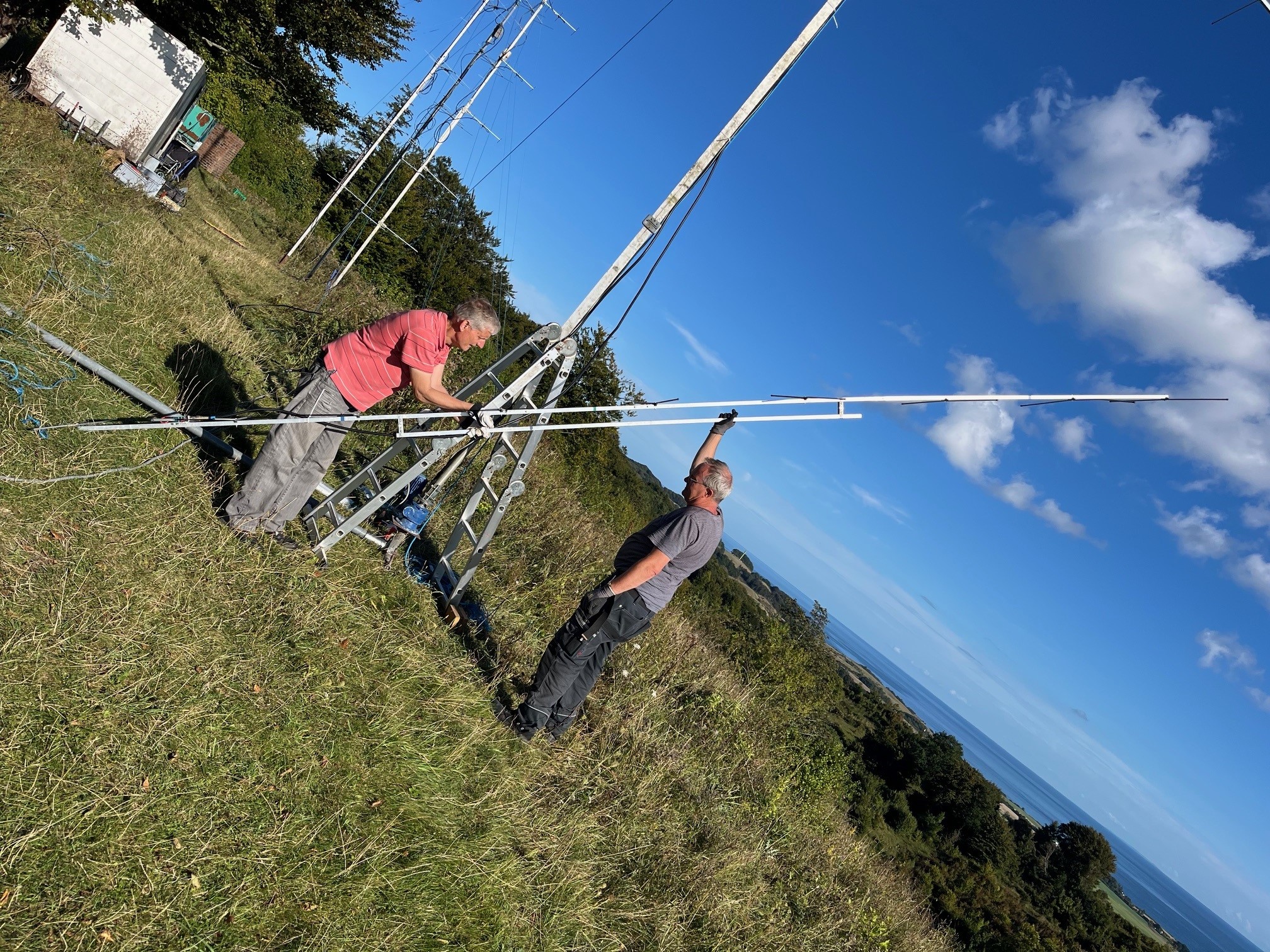
OZ1GER and OZ1FTU preparing for the 5th antenna-mast disassembly and cable fixing
Each year a different contest, and each year the unexpected happens. With all the moving parts of equipment people and logistics -it is always fun! Having established the basic station and equipment with a recent change from tube PAs to LDMOS we where ready for what looked like a technically stable contest. It did not really happen, but in the end it all worked out.
A new feature to be tested in 2025 was a remote operator. AG6QV residing in Seattle on the US west coast was to operate the station during the late night hours giving the rest of the crew just a little sleep. All equipment was tested and serviced (we thought) before the contest and OZ1GER, OZ1FTU, OZ1FDH and PA5DD, where all ready to start the assembly on friday.
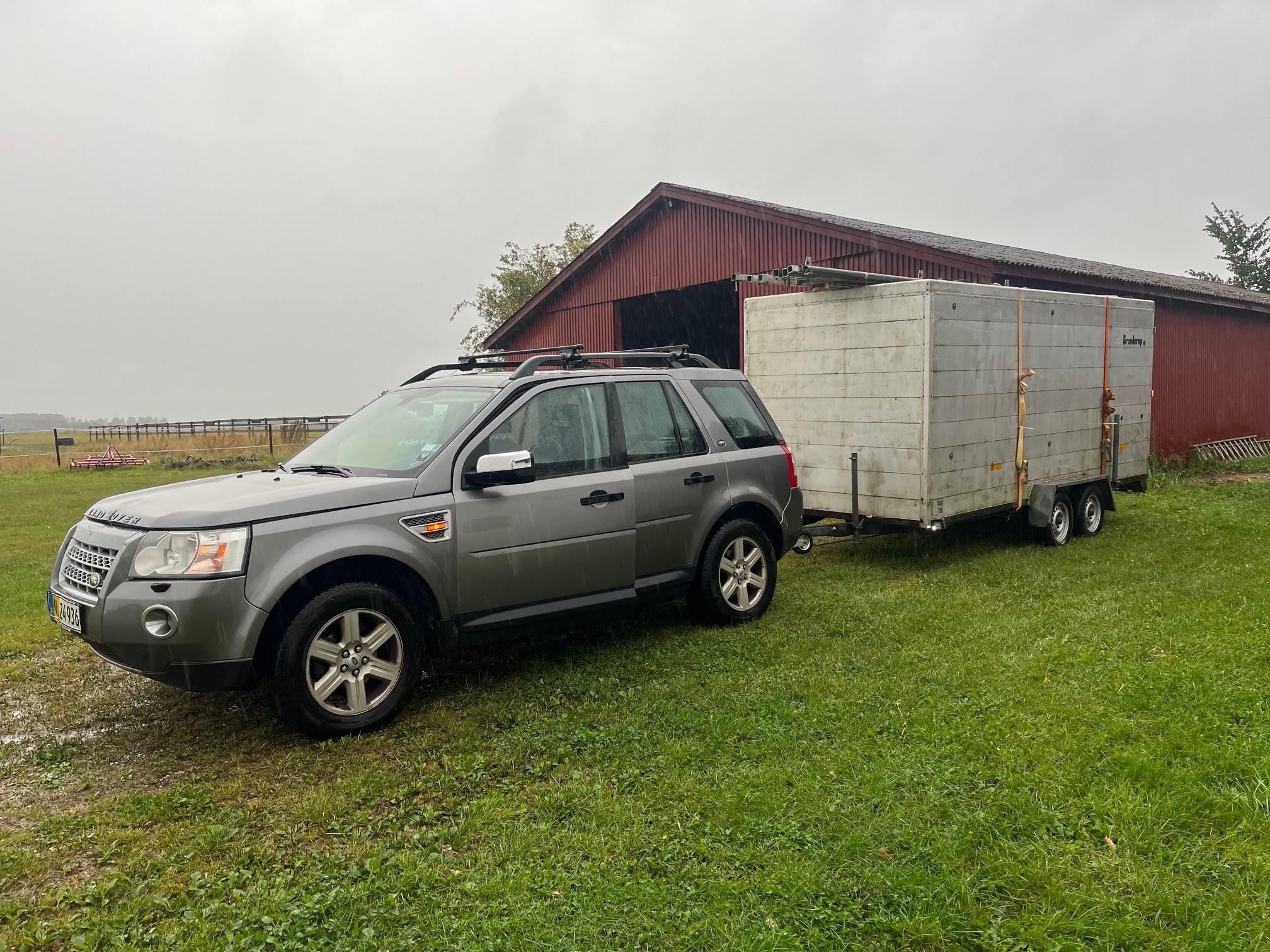
An unexpected event!
The weather forecast for Friday September 5 promised record rains and thunderstorms, not the best conditions for driving across the country and through the forest trails of Klinteskoven. But with the aid of the old Land Rover we where quite confident that we would make it to the site. All was fine and OZ1FDH happily drove off with the big trailer and all the equipment.
20 minutes later driving on the Copenhagen highways, in heavy traffic, a trailer tire exploded! He managed to steer the trailer to the roadside. Now t he next challenge was to change the tire (yes -we did bring a spare) in the middle of the highway traffic. OZ1GER was pretty close and parked his van just behind the trailer shielding OZ1FDH from large trucks allowing us to change the tire. 30 min later we where on the road again, this time slightly more cautious. In retrospect maybe we should have paid a little more attention to the state of the trailer...
he next challenge was to change the tire (yes -we did bring a spare) in the middle of the highway traffic. OZ1GER was pretty close and parked his van just behind the trailer shielding OZ1FDH from large trucks allowing us to change the tire. 30 min later we where on the road again, this time slightly more cautious. In retrospect maybe we should have paid a little more attention to the state of the trailer...
At Kongsbjerg
The sky cleared and got all the equipment to the top of Kongsbjerg 134 m ASL less than 1 hour later than normal despite the dramatic exploding tires. Friday setup went fine and we were ready for an exquisite vegetarian meal, good wine and dutch sweets brought by PA5DD. The sky is absolutely fantastic on the Island of Moen, and this year we were blessed by moonlight illuminating the contest site and the forest.
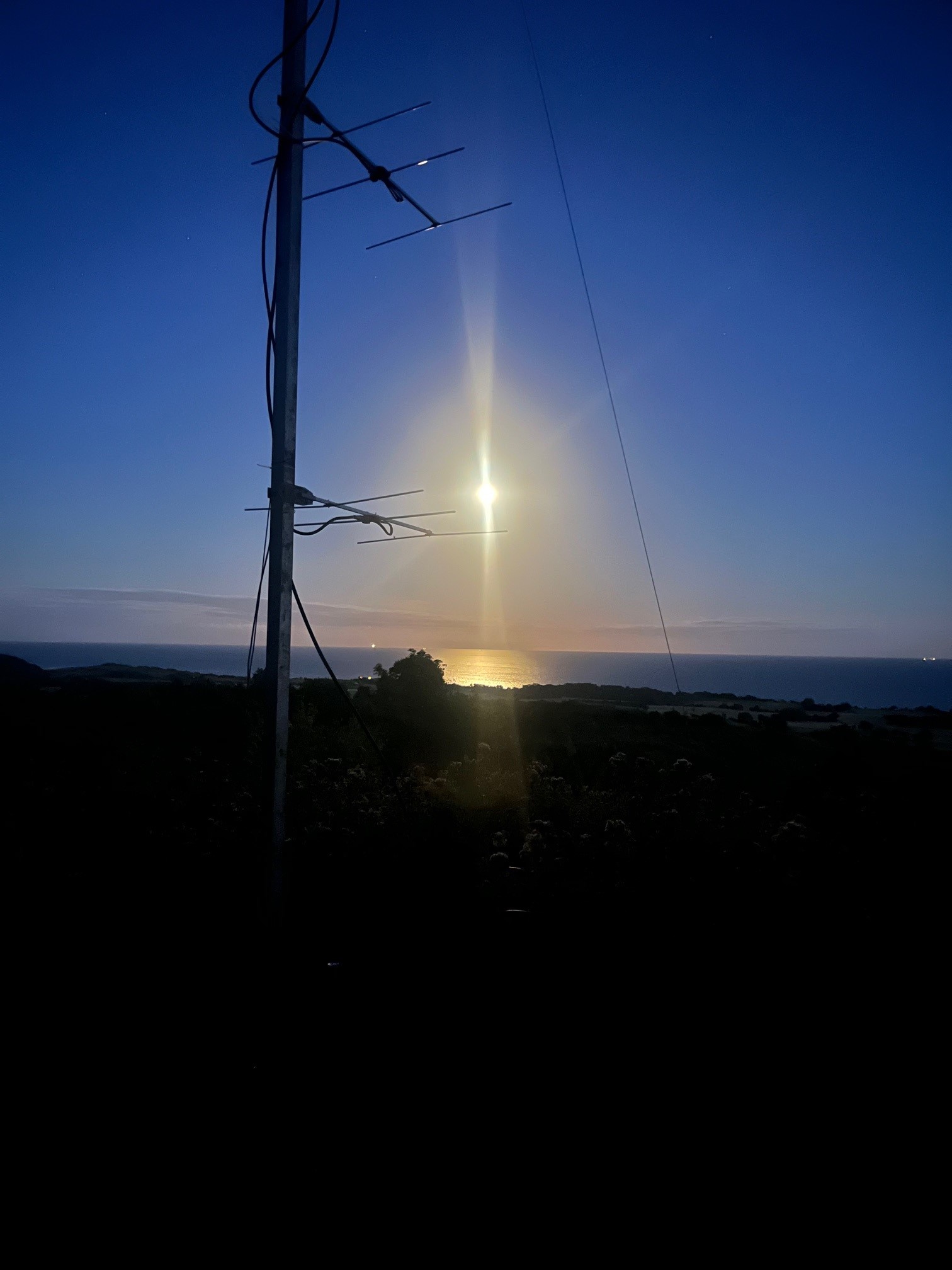 The overall setup at 5P5T is a phased group array of 3 antenna masts each with 8x3 el DK7ZB yagis set in fixed directions and a 4x10 el rotary system. All antennas are stacked vertically to have the widest possible horisontal beamwidth. The phased array covers 150 degrees within its -3dB points. You can read more about the equipment and setup here.
The overall setup at 5P5T is a phased group array of 3 antenna masts each with 8x3 el DK7ZB yagis set in fixed directions and a 4x10 el rotary system. All antennas are stacked vertically to have the widest possible horisontal beamwidth. The phased array covers 150 degrees within its -3dB points. You can read more about the equipment and setup here.
More trouble
Saturday all the troubles started…. Antennas and masts were mounted, everything looked good. We tested the TX, and then one RX system malfunctioned. Damn -we had blown a preamp! The 3 systems of 8x3 el have even more guy wires than antennas and lowering one of the systems was not an easy task. But we managed in time before the contest start, only to realise the pre-amp was fine. It was the RX cable right next to the station that was broken. Something we could have fixed in 2 min...
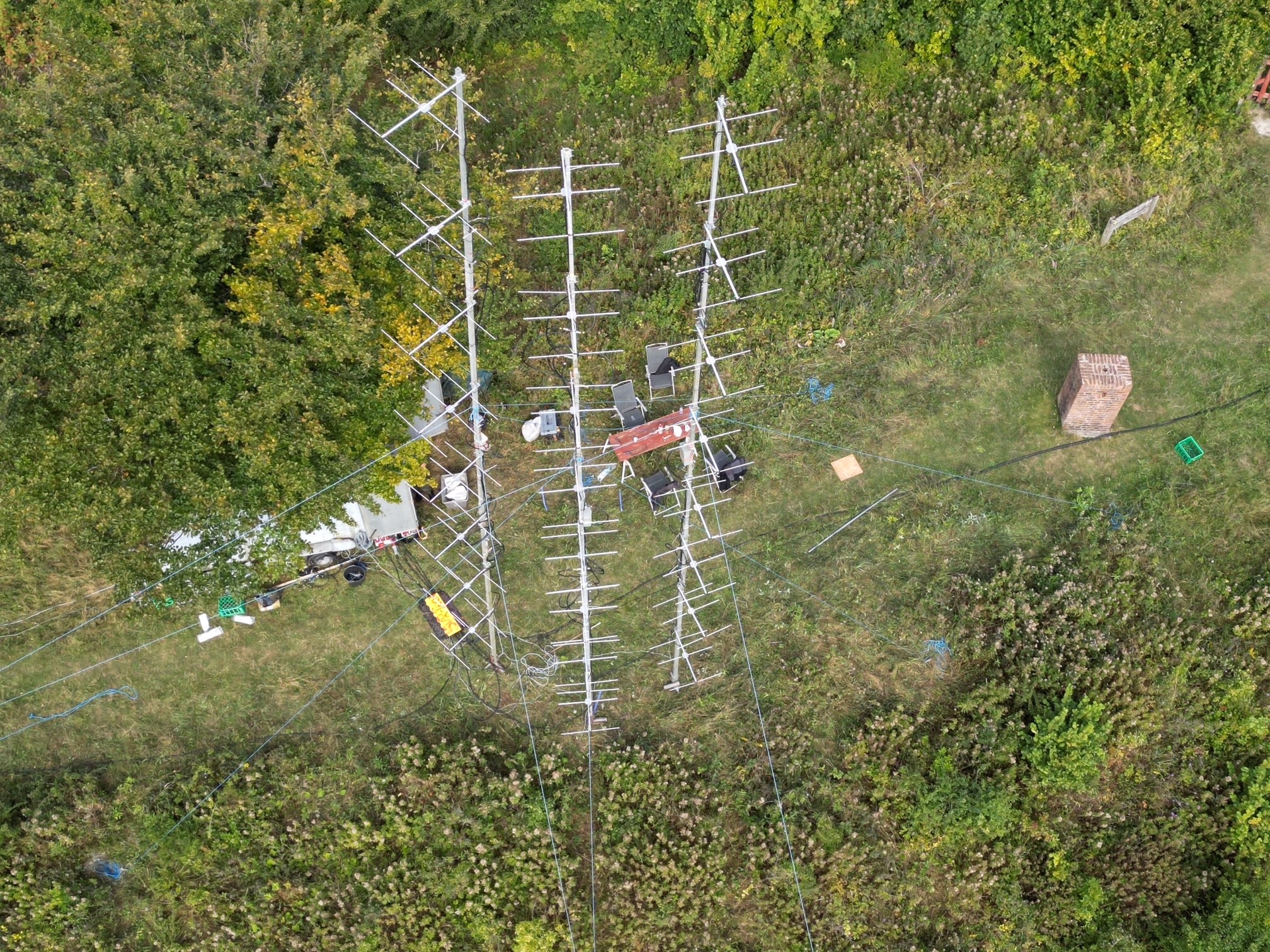
PA5DD was ready at the station, all fired up and ready for contes start. The contest started and the SWR of the 4x10 el went through the roof. PA5DD was busy operating, but the rest of us enjoyed another hour min of heavy antenna lifting. It seemed to be the cable from the relay to the combiner, then the combiner, then the TX cable, then the spare TX cable... All in all the antenna came up and down 5 times before it was fixed.
Contest time!
PA5DD had a pretty good start, more than 50 QSOs the first 30 min, but then it unfortunately dropped a little and we ended with 84 QSOs for the first hour. You can watch Uffe operating the station here.
Signals where fine, but the good condx that we had hoped for did not really materialize. It was an average contest form up here, still fun though. ODX was 9A0BB 1153 km, the only QSO above 1000 kmSignals where fine, but the good condx that we had hoped for did not really materialize. It was an average contest form up here, still fun though. ODX was 9A0BB 1153 km, the only QSO above 1000 km. It was a very big joy to work UW5Y, extremely nice to see them back on the air -Slava Ukraini!. It was a very big joy to work UW5Y, extremely nice to see them back on the air -Slava Ukraini! 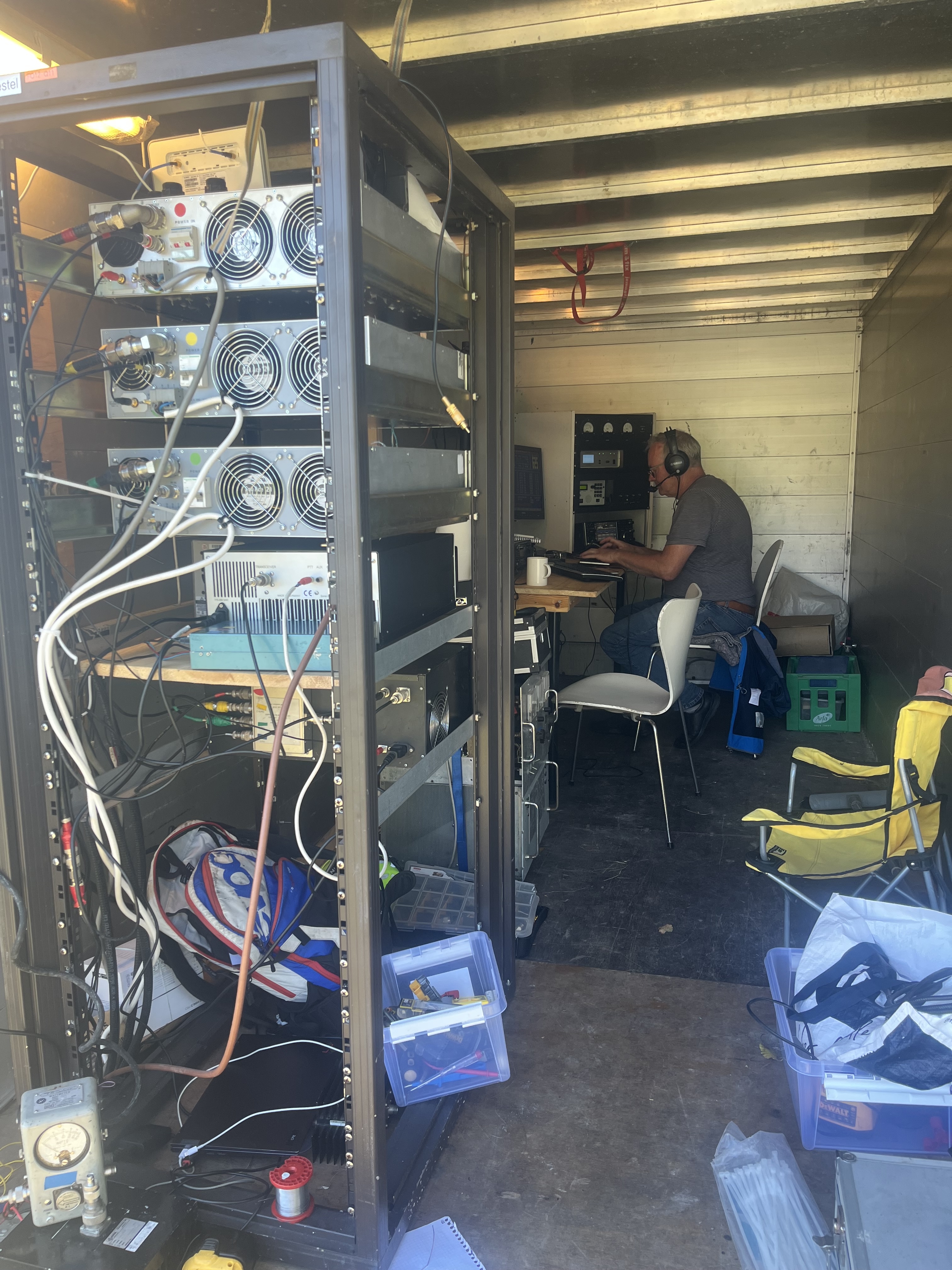
Then came the late night hours and it was time to switch an operator very far away. AG6QV just outside of Seattle was to operate the station giving the site-crew a little sleep. The remote operation of the ICOM-7610 was done using the open source software VFWIEV. As we needed to use a mobile modem it introduced some limitations on bandwidth and the stability. We had worked intensively with the ICOM RS BA1 remote software, but it is so full of bugs and difficult to run via a mobile modem, that it was practically useless. Luckily enough WFVIEW was sufficiently stable.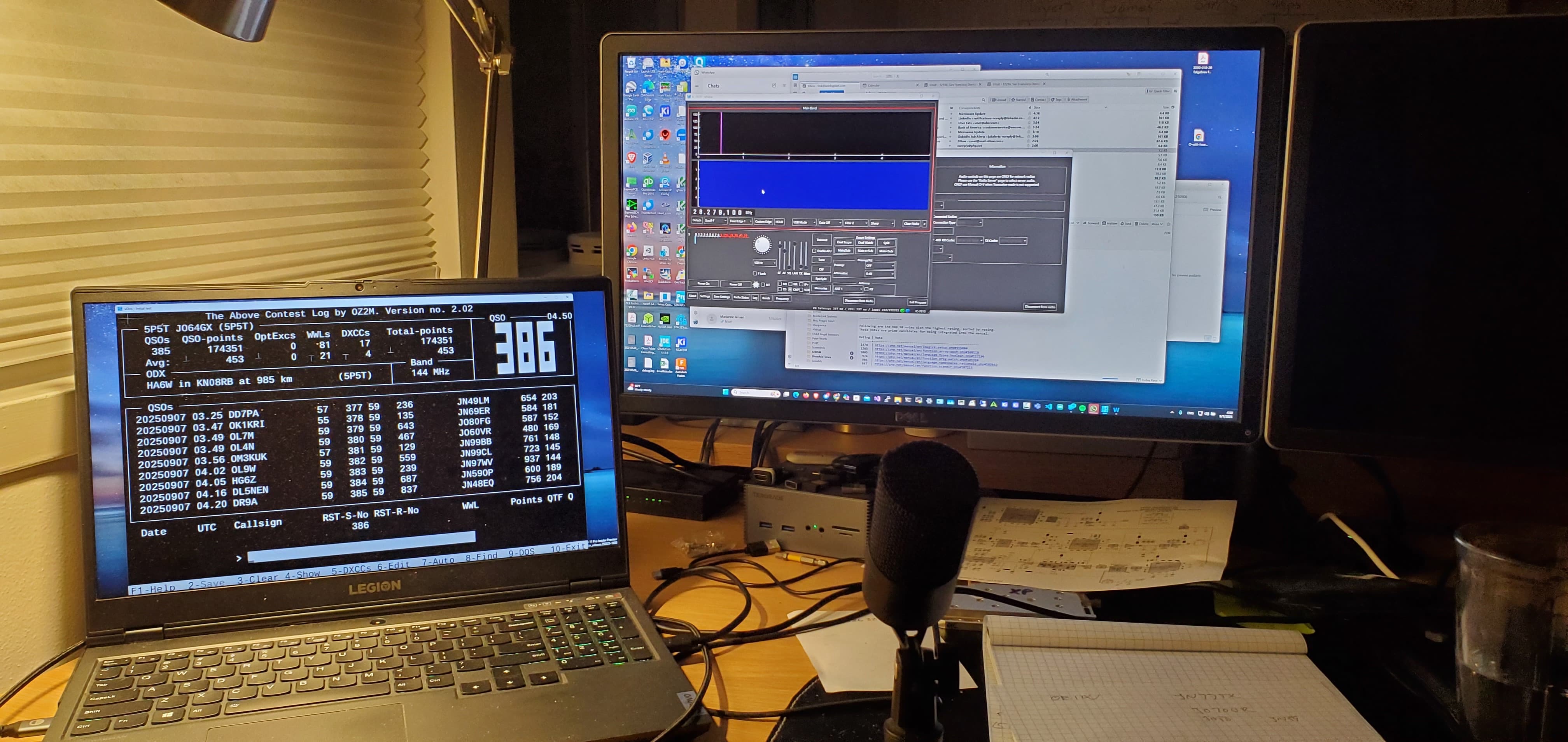
Signals where fine, but the good condx that we had hoped for did not really materialize. It was an average contest form up here, still fun though. ODX was 9A0BB 1153 km, the only QSO above 1000 kmSignals where fine, but the good condx that we had hoped for did not really materialize. It was an average contest form up here, still fun though. ODX was 9A0BB 1153 km, the only QSO above 1000 km. It was a very big joy to work UW5Y, extremely nice to see them back on the air -Slava Ukraini!
The overall result was 672 QSOs, 317000 points in 94 WWL and 19 DXCC. 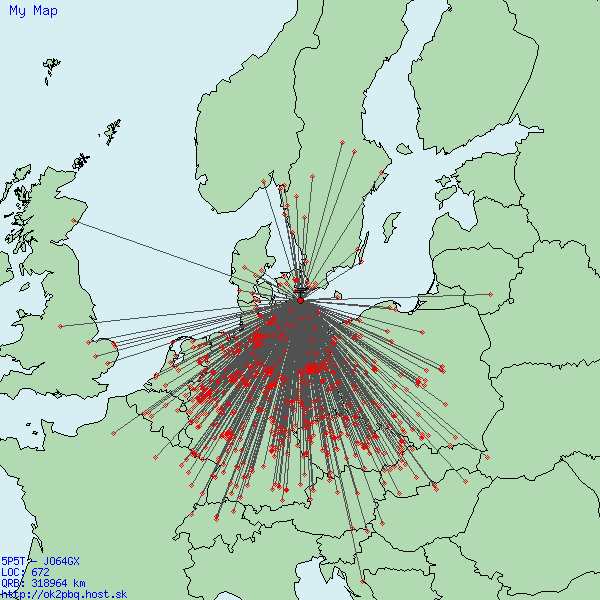
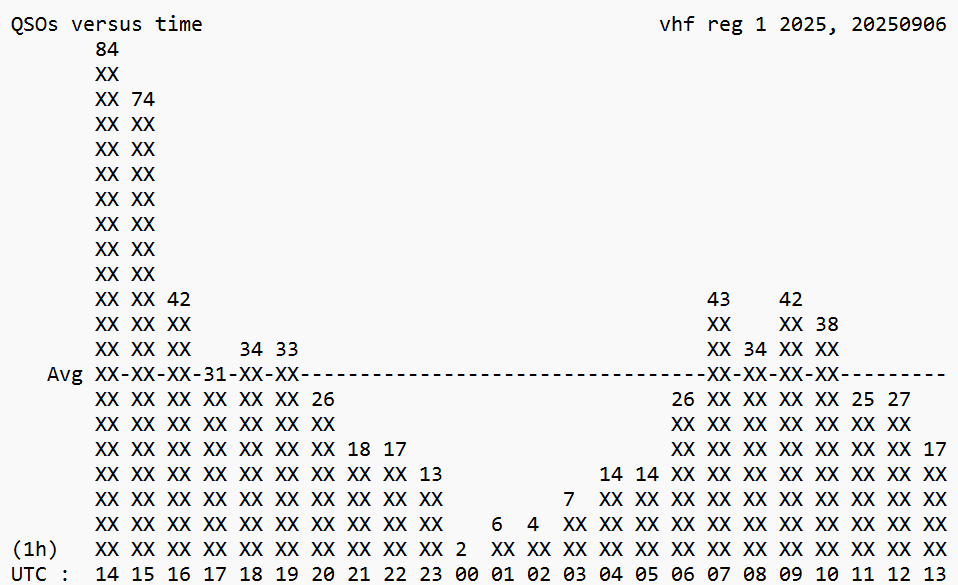
So how does this specialised contest setup work?
Having worked with the phased array of 3 time 8x 3el in full functional state for 3 years in a row, it is time for some evaluation. The phased antennas should not only give us better TX coverage, we should also be able to see diversity reception effects avoiding multipath fading.
In practice we experience better RX signal quality in 15-20% of the QSOs, when we combine 2 or 3 antennas, but also there are occasions where the signals disappear when you listen on all three antennas. Which is of course logical. Thus you need to listen on both individual and combined antennas. However listening on multiple antennas covering 50-150 degrees bandwidth also increases the noise that you pick up, be it from other participants in the contest or from the environment. It is by nature a "noisy antenna". But when the noise is too strong, the combination with the 4x10 el having 3 dB more gain and about a 1/3 of the beamwidth is very useful. The system does work. But it is not easy to install with the need for placing the masts very accurately in a circle with a radius of 1,8 m. The experiment next year could be to still keep the antennas phased, but place them on a line 7 meters apart.

The "Team" from left to right PA5DD, OZ1FDH, OZ1GER and OZ1FTU. Not on
the picture is AG6QV operating remote from Seattle.
